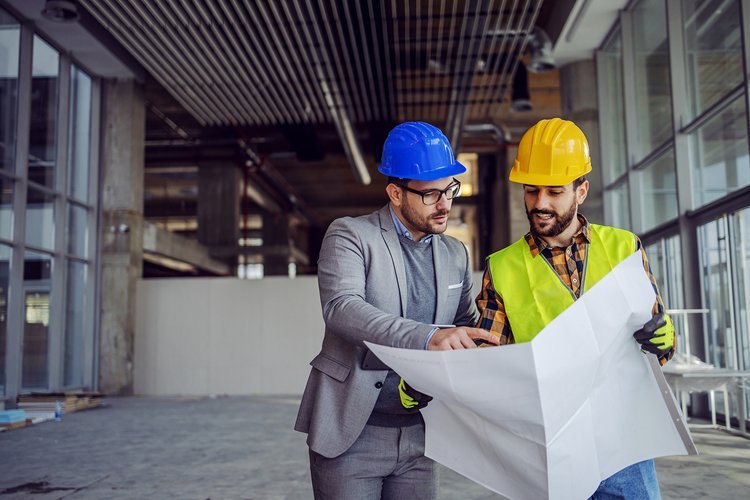Construction integrity stands as the backbone of modern infrastructure. The safety, durability, and reliability of a building or structure rely heavily on the quality and consistency of the engineering services from conception to completion. Structural soundness is not merely a matter of adherence to codes and aesthetic design; it is about ensuring that buildings remain resolute against the tests of time and nature.
The Fundamental Role of Structural Engineering Services
When constructing or renovating existing structures, structural engineering services are a non-negotiable element. These services encompass a vast array of actions, ranging from the initial design to the detailed analysis of structural integrity. Utilising advanced technology and engineering principles, structural engineers create frameworks that not only meet architectural expectations but also comply with building codes and safety standards.
Integral to this process is the ability to anticipate potential issues that could compromise a structure’s integrity. This foresight is what separates a structurally sound building from one that is prone to faults and failures. Structural engineering taps into diverse expertise areas such as load calculations, material compatibility, and environmental considerations to ensure a robust framework.
Identifying Symptoms of Structural Issues
Structural problems can manifest in various ways, ranging from subtle cracks in the foundation to evident shifts in the building configuration. These signs could indicate underlying problems that require immediate attention. If left unaddressed, these issues could lead to severe structural failures, posing risks not only to the physical property but also to human safety.
Addressing Structural Anomalies
When anomalies are detected, the skills of a remedial engineer become invaluable. A remedial engineer specialises in diagnosing and resolving complex structural issues. Their expertise lies in dissecting the root causes and formulating strategic solutions that address both the symptoms and their origins. The typical process involves an exhaustive assessment of the affected structure, identification of faulty elements, and the devising of customised repair schemes.
These thorough remediation plans aim not only to restore the structural integrity but also to enhance the building’s overall lifespan. It is a meticulous task that accounts for corrective measures as well as preventive actions to avert any future complications.
Comprehensive Remediation Strategies
The role of a remedial engineer is multifaceted and often involves working closely with other specialists to ensure all aspects of the structure’s integrity are factored into the repair strategy. This collaboration could cover recommendations on construction materials, rebuilding parts of the structure, or employing advanced technological solutions to fortify the existing framework.
Waterproofing: A Protective Measure
One of the essential defensive strategies in structural integrity maintenance is waterproofing repair. Waterproofing serves as a protective barrier between water and the building materials, helping prevent moisture penetration that can lead to a range of detrimental issues, such as mould growth, corrosion of reinforcement, and general structural degradation.
Quality waterproofing repair is a precise science. It requires not just the application of a waterproofing membrane or sealant but an in-depth understanding of the environmental dynamics that a building is exposed to. Various factors such as climate, building use, and the specific materials employed in construction all play a role in determining the appropriate waterproofing solution.
Waterproofing as a Prolonging Agent
Effective waterproofing repair is often a combination of treating existing moisture damage and implementing systems designed to manage future exposure to water. It’s a critical investment into a building’s longevity that safeguards against escalating remedial costs down the line.
The Integrated Approach to Structural Integrity
The amalgamation of structural engineering, remediation, and waterproofing creates a stronghold for preserving a building’s structural integrity. Each element plays a distinct yet interconnected role in building and maintaining resilient structures.
An integrated approach harnesses the collective skills and expertise of multi-disciplinary teams, ensuring that all aspects of structural safety are scrutinised and optimised. This holistic methodology addresses the immediate needs of the building while also implementing strategies for sustainable maintenance and risk management.
Regular Assessments and Maintenance
It is crucial that the integrity of buildings and structures is not taken for granted once the initial construction or remediation is complete. Regular assessments and ongoing maintenance by qualified engineers are imperatives for identifying potential issues before they escalate into structural threats.
Conclusion
Building integrity is not only a matter of smart engineering and design but also of continuous attention to structural health through services such as structural engineering, remediation, and waterproofing. It’s about establishing a foundation that can withstand the pressures exerted by both human use and the environment, thereby extending the safe functional life of our infrastructure.
The need for proficient structural engineering services and dedicated specialists like remedial engineers to tackle complex structural issues effectively, along with sustainable waterproofing repair, cannot be overstated. Together, these fundamental areas of expertise form an indispensable trio in the preservation of modern buildings and structures. They are the silent sentinels that provide peace of mind, safety, and durability in the multi-dimensional world of construction.








